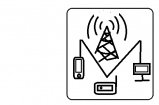Tinkering with a Power Macintosh MDD G4 "Windtunnel" (dual 1.0 GHz)
Looking at a “Windtunnel” PMG4 that really lives up to its name. I think I am dealing with an overheating problem.
If you know the exact characteristics of the original heatsink screws (thread pitch, length, size, etc.) please tell me. The previous owner lost a few of them! (This is the kind of thing I’d have figured was in the Apple service manual, but it’s not.)
Very curiously, Debian never caused the fans in this system to rev up even slightly. Perhaps their processor idling algorithm is better or their software is better optimized/behaved than Mac OS X. Neither did Debian ever exhibit the periodic instability of Mac OS X.
By the way, this computer does in fact have a modem in place. That’s just another hazard of making videos very late at night.
There was a Power Macintosh G5 that I probably could have talked my way into owning, but those things are a massive white elephant that I just don’t want. (I have one already that’s in need of some love. The aluminum case and its styling do not appeal to me in the slightest.)
Interestingly, it appears that the power button LED is pulse-width modulated even at “full” intensity. It’s solidly lit in “real life”. The blinking you see is a result of the camera’s shutter and the PWM drive frequency “beating” against one another.
Hardware Monitor for Mac OS X: https://www.bresink.com/osx/HardwareMonitor.html
Finally, I did happen to notice that some time after the computer revved its fans up, that the cricket’s stridulations (your word for the day and apparently Firefox’s as well) became louder!
Views : 41170
macintosh




